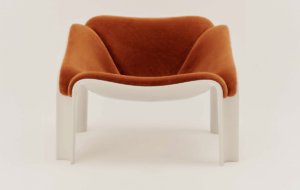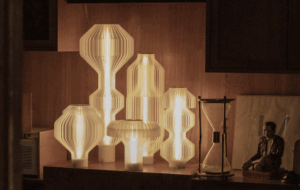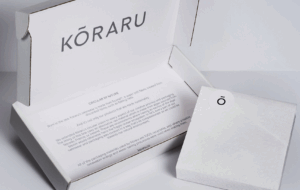

words Marcus Fairs
“New Yorkers, famed for our refined tastes and appreciation for the best of everything, are the perfect audience for New York Design Week, a showcase for contemporary society’s highest quality and most innovative home furnishings.”
So states Michael R Bloomberg, Mayor of the City of New York, in an official proclamation naming June 14-17 2005 as the city’s first ever design week. Printed on fake vellum and bearing a fake seal, copies of the document were distributed at events across the city.
“In a city as large and vital as New York, good design is not a luxury, it is a necessity,” Bloomberg spouts. “This is just as true for home furnishings as it is for subway turnstiles and skyscrapers.”
But New Yorkers aren’t listening, according to Stefan Boublil, creative director of design agency The Apartment. “People here see design as less good,” he says. “The market is not really there for people willing to spend more money to get what they see as the same functionality. Here, the culture has long been one size fits all. There’s none of that culture of the gratuitously beautiful.”
New York Design Week is anchored around the International Contemporary Furniture Fair (ICFF) – a dry and somewhat corporate trade show held at the Jacob K Javits convention centre on the Hudson. There are also a few dozen off-site shows and parties going on around the city, but it’s small by European standards.
“New York people are really ‘fuck you’ kind of people,” says Boublil. “Noboby’s going to tell us what kind of week this is.”
Boublil opened The Apartment in NoLiTa five years ago as a design showroom disguised as a domestic interior, in which everything was for sale. But New Yorkers preferred to stick with Crate & Barrel (New York’s equivalent to Habitat) and Boublil had to diversify into areas such as brand consulting and real-estate development to keep the business going.
“Americans are not educated to appreciate design,” says Abe Gurko, founder of Chelsea design show Space Downtown, which, with its designersblock vibe, is the most interesting of the off-site events. “It’s a disposable mindset.”
Indeed, while the ICFF held a stuffy and expensive ($50 a head) cocktail party for its besuited exhibitors at MoMA, the designers themselves were partying at the al fresco showroom openings in SoHo’s Greene and Wooster streets, where shops such as Moss, Troy and Design Within Reach were largely showing European design fresh from Milan.
Most of the best shows around the city featured European work, with Design Academy Eindhoven’s spectacular Dutch Village – a retrospective of work by its star graduates – the best of the lot. By contrast, good work by American designers was thin on the ground.
“It’s strange,” says Ron Arad, who was in town for a retrospective of his work at the Barry Friedman gallery. “In the Fifties, American designers were top – Eames, Saarinen, Nelson.” Arad feels that American designers today are failing to live up to their heritage: “I helped judge the National Design Awards and they have a long way to go,” he says. “Especially in product design.”
“Americans are so obsessed with their Eames heritage,” agrees London-based design writer Max Fraser, who curated a show of British design at Conran’s New York showroom during the week. “A lot of young designers are struggling to make their mark against the strength of European design and their own heritage.”
Arad’s own show was hugely successful, with vintage pieces selling for enormous sums. But Arad attributes this to the fact that his work is often viewed not as design but as art. “Art is king in New York,” Arad says. “It’s a collectors’ market, not a design market.”
“The New York design scene is fragmented and even somewhat non-existent,” agrees Karim Rashid, New York’s best-known designer. “Art is a powerful and exhilarating force, with one of the best art scenes in the world which has nothing to do with the design profession. There are no real critics in design in newspapers and there is no manufacturing in the region.”
New York’s reluctance to embrace European-style design does not seem to be stopping the Italians, however: the big news for fair-watchers this year was the launch of a breakaway show featuring all the big Italian brands that used to exhibit at the ICFF. From now on, they will show separately under the Milan Furniture Fair’s “I Saloni” banner – the first time the Salone has taken its brand abroad.
Italy’s Cappellini and Poltrona Frau have also recently opened showrooms in SoHo, reinforcing the impression that New York is viewed as a strong potential market.
“There’s a lot of money here,” says Boublil. “Italian kitchen companies are doing really well here in terms of sales even though they’re really bad in terms of customer service. They treat customers like shit.”
In fact, everyone we spoke to in New York detects signs that the city’s – and the nation’s – attitude to design is slowly thawing. “[American companies] are only just discovering that design is something that sells more things – the iPod is beginning to show that,” says Boublil.
“Americans are coming to love design, what with Apple computers, Nike and Target,” agrees Rashid. “The consumer has become much savvier, much more demanding; design is a way of shaping a more critical landscape, one that is more beautiful, more poetic, more pleasurable, with higher performance, higher quality, and a lower price.”
Abe Gurko believes that New York Design Week will quickly become an important event in the global design calender. “New York is finally going to become a design destination. This year, the New York Times is reporting on the off-site events for the first time. The ICFF is very corporate but there’s this groove now that you don’t have to be corporate to do business.”
For visitors, the city’s groove is the most noticeable and appealing element of design week. New York is a 24-hour city that is finally recovering its pre-9/11 swing, and if the shows are largely uninspiring, the nightlife more than makes up for it. Less frantic than Milan, more manageable than London and with none of Tokyo’s language barriers, New York Design Week may not be the best place to experience design, but it’s a great excuse for designers to experience one of the world’s most vibrant cities.

















